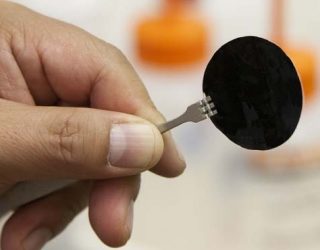Nov 6 2012
US scientists have developed a hi-tech military uniform material capable of driving away biological and chemical agents.
 Military Snakeskin Fabric. Image copyright and courtesy of LLNL
Military Snakeskin Fabric. Image copyright and courtesy of LLNL
When exposed to these harmful agents, the same material can also shed away its outermost layer, just like a snake would.
Potentially an invaluable tool for warfighters in an age when warfare's not just exclusive to battlefields, the product's being worked on by a team at Lawrence Livermore National Laboratory - a site where, powered by a $1.5 billion annual budget, scientists are progressing cutting-edge science and technology innovations. Their mission is to boost US defence policies, suppress the threat posed to the world by terrorism and use ‘vision, quality, integrity and technical excellence' to meet the United States' scientific needs.
Military Snakeskin Fabric
The ‘snakeskin' material programme is itself being funded by DTRA - the US Defense Threat Reduction Agency - and takes the form of a fabric manufactured from minute carbon nanotubes, containing microscopically-small pores.
When the military snakeskin fabric meets biological or chemical agents, these pores slam shut. These are fast-reacting pores, designed to offer high breathability - a key requirement for warfighters immersed in already-stressful situations. The pore closure state is this material's first line of defence but, if needed, it can also shed a layer if contamination does take place.
Fabric Repels Chemical Agents
So far, the material's shown it can stop the infiltration of bacteria and viruses up to 10 nanometers in width. However, it can't yet effectively block anything smaller so, right now, the basic design's being refined with a view to giving it even more functionality and allowing the fabric to repel chemicals agents present in smaller quantities.
"The uniform will be like a smart second skin that responds to the environment", explained LLNL's Francesco Fornasiero, who's heading this research. "Without the need of an external control system, the fabric will be able to switch reversibly from a highly breathable state to a protective one in response to the presence of the environmental threat. In the protective state, the uniform will block the chemical threat while maintaining a good breathability level."
"Development of chemical threat responsive carbon nanotube membranes is a great example of novel material's potential to provide innovative solutions for the Department of Defense CB needs", added DTRA's Tracee Harris. "This futuristic uniform would allow our military forces to operate safely for extended time periods and successfully complete their missions in environments contaminated with chemical and biological warfare agents."